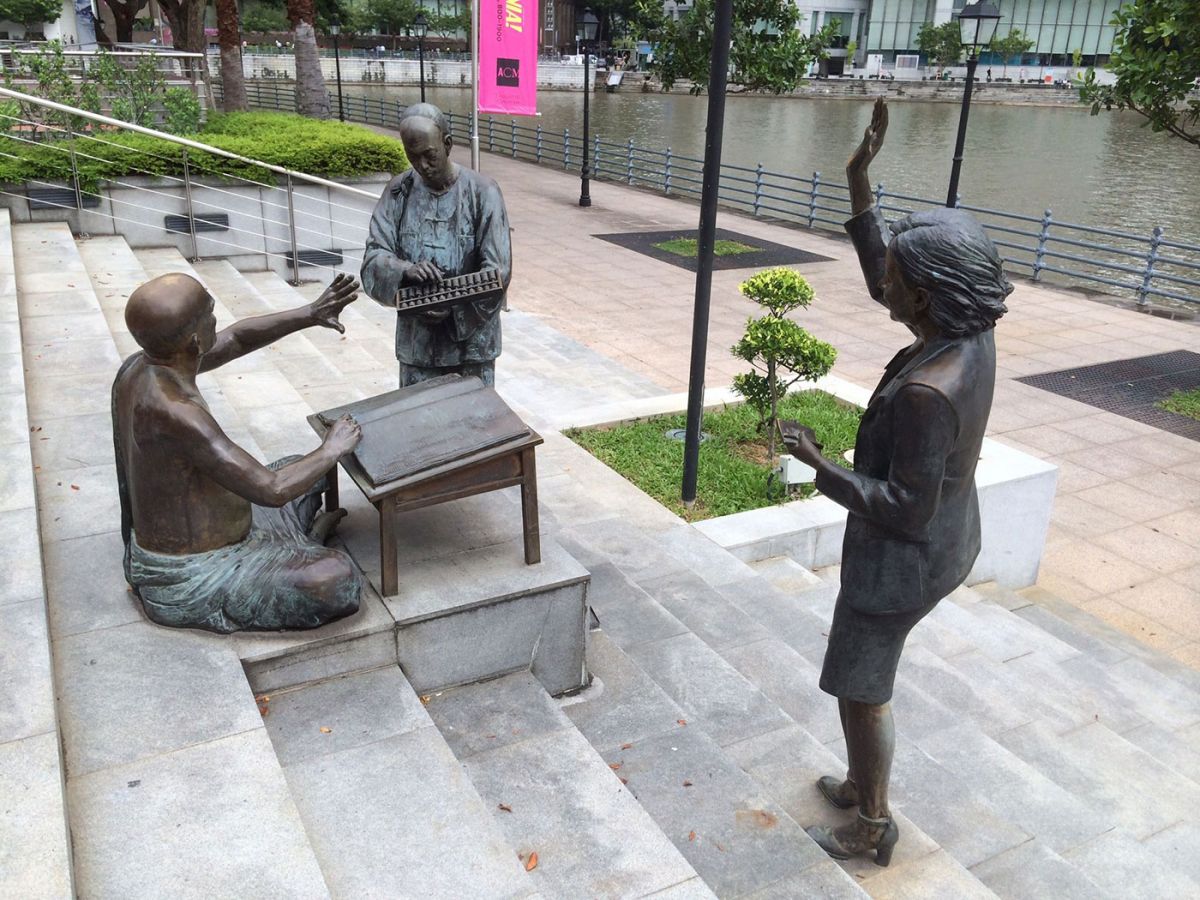Modern maritime interactions of Asian merchant communities
From the nineteenth century, East Asia and Southeast Asia were affected by the expansionism of European empires and the technological advancement of transportation. This expansionism was regarded politically as an invasion of external powers, but for Asian merchant groups it provided an economic opportunity. The Western empires in Asia, along with their advanced technologies, made it possible to form and maintain trans-border economic networks. For instance, many Chinese merchants in British Malaya and the Straits Settlement accumulated their fortunes through the influence of the British Empire and its modernized institutions. Within this economic environment emerged Chinese and Indian merchant groups with trans-border business networks within Asia.
In the earlier stage of Chinese migration, overseas Chinese were not regarded as imperial subjects and therefore none of the political regimes (including Qing, the Europeans, and local rulers) were concerned with them. Later, Chinese people attempting to depart imperial territory by crossing the South China Sea and to make a living overseas were regarded by the Qing government as criminals, and were often executed by officials. The Qing government’s stance on this matter changed by the mid-1870s, as Qing elites began to realize the economic potential of the Chinese living abroad.
In 1876, the Qing government decided to dispatch ambassadors to Europe, America, and Singapore for the protection of these overseas Chinese groups. In 1893, Emperor Gunagxu announced that “From now on, Chinese people and merchants abroad are allowed to come back to their hometowns as well as to go overseas freely”.1 In the period following the Xinhai Revolution in 1911, the Beiyang government was again not very interested in the circumstances of overseas Chinese communities, but Sun Yat-Sen established the Overseas Chinese Affairs Bureau in Guangzhou in 1924. Sun fully acknowledged the contribution of the overseas Chinese patriot remittances and their economic potential. The Nationalist Government soon followed suit and tried to attract the fortunes of overseas Chinese merchants.
Despite the changed attitude of their home regimes, overseas Chinese merchants decided to be ‘international orphans’,2 in contrast to the overseas Chinese laborers who maintained strong and unilateral connections with their home villages. The overseas Chinese merchants in Southeast Asia had to hold dual connections with their home country and host country, which resulted in their having dual – and sometimes even multiple – nationalities as they dealt with the trans-border business network.
On the other hand, Indian merchants who conducted business between South Asia and Southeast Asia migrated worldwide by the end of the nineteenth century, following the incorporation of India into the British-dominated network of trade and finance. The British-occupied Asian territories, such as Burma, Malaya, the Straits Settlement, and Hong Kong, became the main areas of their migration. Furthermore, the opening of China caused by the Opium War allowed Indian merchants to do business in the International Settlements of Chinese treaty ports. In the period 1844-1931, over 300,000 Indian traders moved from India to Malaya.3 Unlike the indentured Indian labor migrants, they were a spontaneous migration group that targeted economic profits.
Based on the caste system and regional identity, rather than nationalism, diverse Indian communities became involved in a varied range of international business networks. For instance, the Indian merchant communities from the Sind region formed a notable international banking network throughout Asia. In particular, they adopted a hundi system (a type of cheque or draft system that was a convenient form of remittance from one place to another) in which their networks were maintained with the use of hundis as a major currency. Interestingly enough, the hundi system was remarkably similar to the exchange draft system used within the overseas Chinese remittance network, Qiaopi (僑批). Chinese and Indian merchants thus appear to have operated a similar system of payment within their respective business networks.
Because the Indian merchant network had been riding alongside the expansion of the British Empire, it strongly relied on the growing imperial territories. These Indian merchants were controlled by the British Empire as colonized subjects. Paradoxically, this allowed them to form networks more easily as they had the protection of being British subjects. The business activities of Indian merchant communities were spontaneous and free from the political intentions of the British Empire but their activities were facilitated by the influences of the British Empire.
In mapping the economic activities and networks of East Asia in the modern period, the movements and networks of Asian merchants who participated in maritime interactions must be drawn as complicated lines that transcend boundaries. The lines denoting the movements of Indian merchants should accompany the expanding territories of the British Empire, which provided them – the imperial subject – which a geographical limit and a stable business environment. On the other hand, Chinese merchants could not depend upon their home country (i.e., China during the late Qing dynasty and the Republican Era) to provide them with a stable political status and conversely were faced with the demand to support their home country. As a result, Chinese entrepreneurs engaged in the international business network had to constantly adapt, react, and survive under diverse empires and regimes, without any stable political or social status. That is why their business network was spread over diverse regions, including the British Empire, French Indochina, the Dutch Indies, Thailand, the Philippines, Japan, and Korea. This widespread trans-border network provided Chinese merchants with diverse economic opportunities and information, and their unstable positions within foreign countries meant that they were able to sensitively react to external circumstances and naturally adapt to the political changes of their host countries. Due to these survival strategies Chinese overseas merchants have been able to maintain a presence within the modern Asian economy, whereas for Indian merchants, the fate of their business was, to an extent, tied to the rise and fall of the empires to which they belonged.
Jong-Ho Kim, Assistant Professor, Institute for East Asian Studies, Sogang University, kimjongho@sogang.ac.kr

